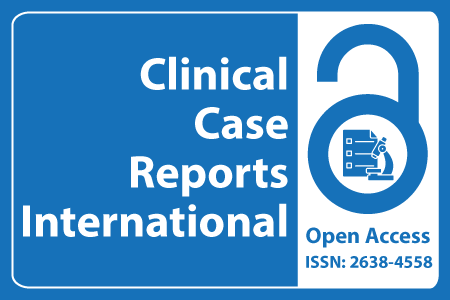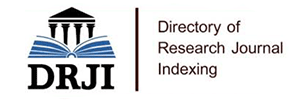
Journal Basic Info
- Impact Factor: 0.285**
- H-Index: 6
- ISSN: 2638-4558
- DOI: 10.25107/2638-4558
Major Scope
- Signs and Symptoms-Clinical Findings
- Pulmonary Medicine
- Orthopedics & Rheumatology
- Dentistry and Oral Medicine
- Cardiac Surgery
- Inflammation
- Pain Management
- Epilepsy and Seizures
Abstract
Citation: Clin Case Rep Int. 2023;7(1):1460.DOI: 10.25107/2638-4558.1460
Dermatitis Artefacta: Retrospective Series of 32 Cases
Hali F, Rimaoui M, EL Mokadem M, Chiheb S, Agoub M and Battas O
Department of Dermatology, Ibn Rochd University Hospital, Casablanca, Morocco
Department of Psychiatric, Ibn Rochd University Hospital, Casablanca, Morocco
*Correspondance to: Maryem Rimaoui
PDF Full Text Research Article | Open Access
Abstract:
Introduction: Dermatitis artefacta is the voluntary imitation, the induction of organic symptoms by a patient in order to manipulate others, especially the medical profession. It is a potentially serious psychopathological manifestation that is difficult to manage. The aim of our study is to illustrate the epidemiological and evolutionary characteristics of this factitious disorder through a series of cases. Materials and Methods: We report a retrospective and descriptive study, covering a period of 10 years from 2010 to 2020. The exploitation data was provided from the medical archives. Results: Our study concerned a cohort of 32 patients, the average age was 31.5 years. The sex ratio (M/F) was 0.1. The clinical analysis allowed us to identify a bullous lesion aspect (25%). The psychiatric examination revealed a depressive condition in 20 patients (62.5%). All patients were treated with occlusive dressings and appropriate psychological follow-up was adopted. After 6 months, a relapse rate of 58% was reported. Discussion: Our study is one of the major series in the medical literature illustrating cutaneous pathomimia. It is a diagnosis of elimination. Presumptive arguments such as geometric lesions and lesions with sharp contours are often found, which is compatible with the results of the literature. Pathomimia can signify an "indirect call for help" about a situation of psychological difficulty. Multidisciplinary management is essential.
Keywords:
#
Cite the Article:
Hali F, Rimaoui M, EL Mokadem M, Chiheb S, Agoub M, Battas O. Dermatitis Artefacta: Retrospective Series of 32 Cases. Clin Case Rep Int. 2023; 7: 1460.













